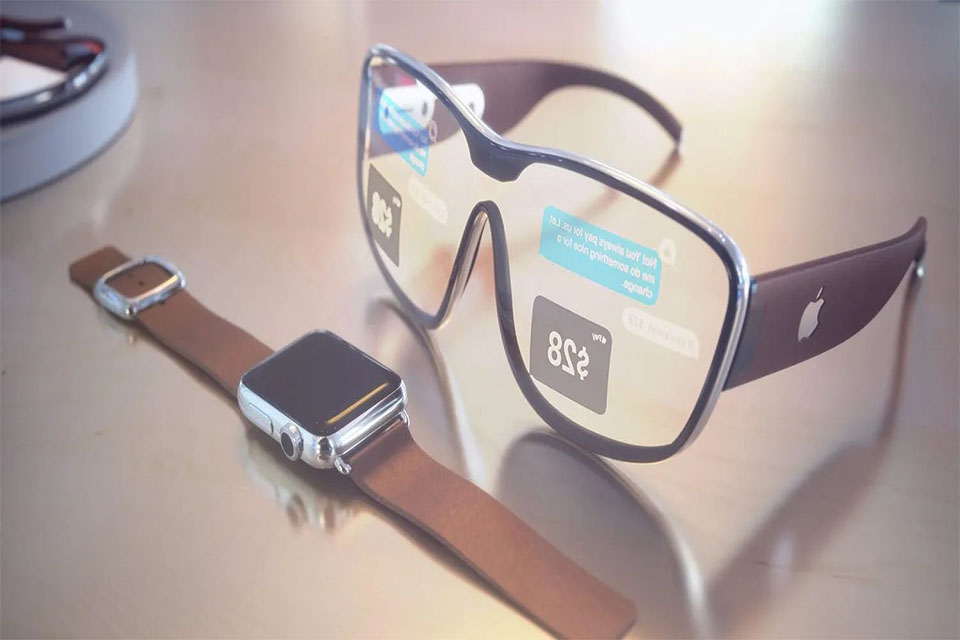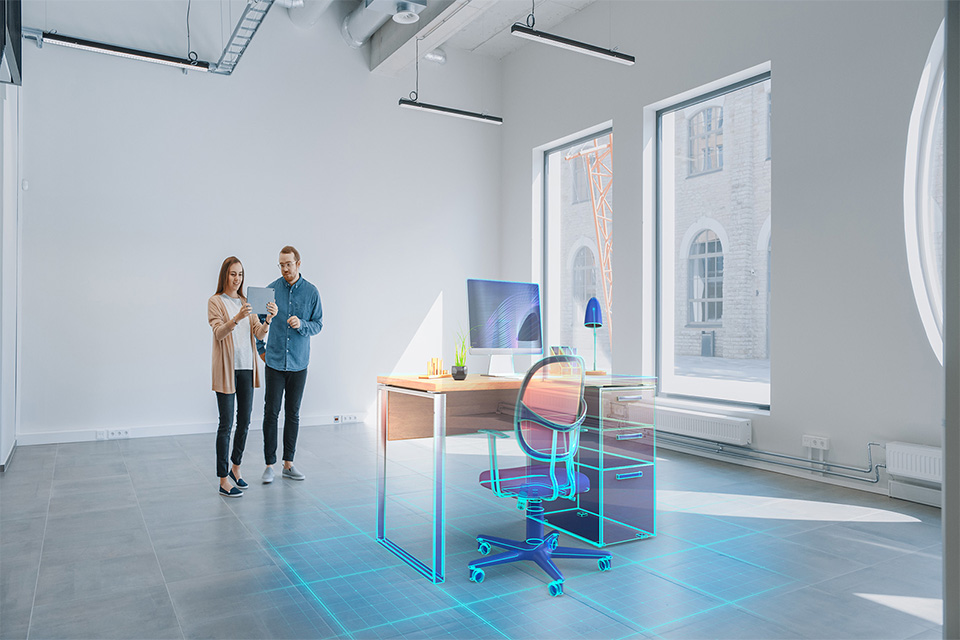Augmented Reality (AR) glasses are more than a futuristic gadget; they are an innovation set to revolutionize the way we interact with the world. From enhancing real-world experiences to transforming everyday tasks, AR glasses are shaping the future of technology. But how do they work, and what makes them such a game-changer? This article dives deep into the potential of AR glasses, exploring how they enhance daily life, their various applications, and why they’re the future of augmented reality.
1. What Are AR Glasses?
Definition and Basic Functionality
Differences between AR glasses and traditional smart glasses
2. How Do AR Glasses Work?
Overview of AR Technology
Integration of AR glasses with smartphones and wearables
3. How AR Glasses Enhance Daily Life
Navigation and Real-World Assistance
Hands-Free Communication and Notifications
4. Transforming the Workplace with AR Glasses
Applications in Healthcare, Manufacturing, and Retail
Improving Remote Collaboration and Training
5. The Evolution of AR Glasses
Key Developments in AR Technology
Milestones in the Journey of AR Glasses
6. The Potential of AR Glasses in Education
Creating Interactive Learning Environments
Transforming Distance Learning
7. How AR Glasses Shape Entertainment and Gaming
Enhancing Immersive Experiences
Merging Virtual and Real Worlds
8. AR Glasses and User Experience
Balancing Comfort and Functionality
The Role of Customization
9. Challenges in the Adoption of AR Glasses
Addressing Cost and Accessibility
Privacy and Security Concerns
10. What Does the Future Hold for AR Glasses?
Predictions for the Next Decade
Potential to Revolutionize Our World
What Are AR Glasses?
AR glasses are wearable devices designed to overlay digital information onto the real world. Unlike traditional smart glasses, which typically focus on basic notifications, AR glasses provide an immersive experience by combining augmented reality technology with real-world visuals. This combination allows users to interact with digital content seamlessly while remaining connected to their surroundings.
Key Features of AR Glasses:
Real-time data overlays
Gesture and voice control
Integration with smartphones and other devices
Fun Fact: AR glasses are often seen as a stepping stone to fully immersive technologies like virtual reality (VR) but maintain the advantage of keeping users engaged in the physical world.
Understanding how AR glasses function involves exploring the underlying technology that powers them. At their core, AR glasses use sensors, cameras, and displays to project digital images onto the user’s field of vision.
Display Technology: Transparent OLED or waveguide displays that blend digital visuals with the real world.
Sensors and Cameras: Detect surroundings to anchor virtual objects in real-world locations.
Processors: Handle complex computations needed for rendering augmented content.
AR glasses often connect to smartphones or cloud services, enabling users to access a wide range of applications, from navigation to entertainment.
Did You Know? Many AR glasses rely on lightweight, power-efficient designs to ensure all-day usability.
One of the most exciting aspects of augmented reality glasses is their ability to improve everyday experiences. By seamlessly integrating digital content into the real world, AR glasses offer practical benefits that make routine tasks more efficient and enjoyable.
AR glasses can provide step-by-step directions directly in the user’s line of sight, eliminating the need to constantly check a phone.
Example: Imagine walking through a busy city and having your glasses highlight the shortest route to your destination, complete with landmarks and traffic updates.
With AR glasses, users can receive calls, read messages, and even compose emails without lifting a finger.
List of Benefits:
Increased productivity
Reduced reliance on handheld devices
Enhanced multitasking capabilities

AR glasses are finding significant applications in professional environments, offering solutions that enhance productivity and innovation.
Healthcare: Surgeons can view critical patient data in real-time during procedures.
Manufacturing: Workers receive assembly instructions and safety alerts directly on their glasses.
Retail: Virtual try-ons allow customers to see how products will look before purchasing.
AR glasses enable remote teams to collaborate as if they were in the same room. Trainees can receive guided instructions with visual overlays, reducing the learning curve.
The journey of AR glasses has been marked by continuous innovation. From early prototypes to advanced models, these devices have evolved significantly.
Introduction of lightweight, stylish designs
Advancements in battery life and processing power
Enhanced connectivity with 5G networks
2013: Google Glass sets the stage for AR wearables.
2021: Apple and other tech giants enter the AR glasses market, pushing boundaries further.
Education is another sector where AR glasses are making waves. By creating interactive learning environments, these devices are transforming the way students engage with educational content.
AR glasses allow students to visualize complex concepts, such as anatomy or physics simulations, in three dimensions.
Quote: "With AR glasses, learning becomes an experience rather than a chore."
By overlaying virtual classrooms onto physical spaces, AR glasses bridge the gap between remote and in-person education.

The entertainment and gaming industries have embraced AR glasses as tools for creating immersive experiences that blur the lines between reality and fantasy.
Users can engage with holographic characters or play games that incorporate their surroundings into the storyline.
AR glasses enable augmented experiences like interactive concerts, where digital effects sync with live performances.
A great user experience is crucial for the widespread adoption of AR glasses. Manufacturers are focusing on striking a balance between comfort and functionality.
Lightweight materials and ergonomic designs make AR glasses suitable for extended use without causing discomfort.
Personalized settings, such as adjustable lenses and modular components, enhance usability for diverse demographics.
Despite their potential, AR glasses face several hurdles that need to be addressed for mainstream acceptance.
High production costs often translate to expensive retail prices, limiting access for many consumers.
The ability of AR glasses to capture and process data raises questions about user privacy and data security.
Table: Key Challenges and Solutions
| Challenge | Potential Solution |
|---|---|
| High cost | Mass production efficiencies |
| Privacy concerns | Robust data protection laws |
The future of augmented reality glasses is bright, with advancements poised to redefine their role in our daily lives.
Integration with artificial intelligence for smarter interactions.
Expanded use in areas like tourism and public safety.
By bridging the gap between the digital and physical worlds, AR glasses are set to become indispensable tools for personal and professional use.

AR glasses combine digital and real-world elements to transform daily activities.
They enhance experiences in navigation, communication, work, and entertainment.
Challenges like cost and privacy must be addressed for widespread adoption.
The future of AR glasses promises exciting advancements in technology and applications.
Ready to explore the potential of AR glasses in your own life? The revolution has just begun!
Contact: Ashley Wu
Phone: +86 17773983073
E-mail: [email protected]
Add: 708 Room A Buiding Huafeng International Robot Industrial Park Xixiang Bao'an